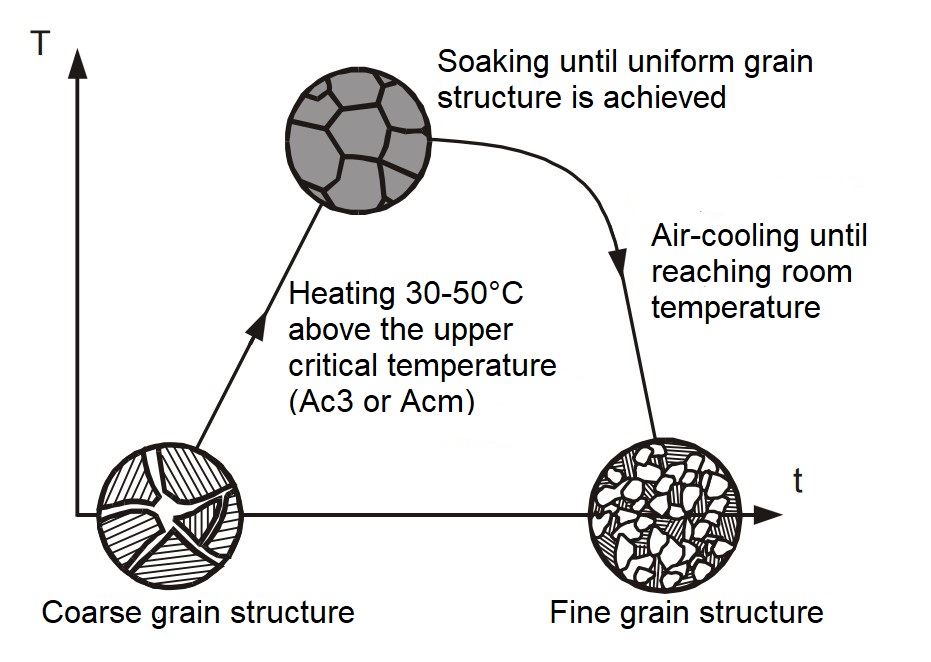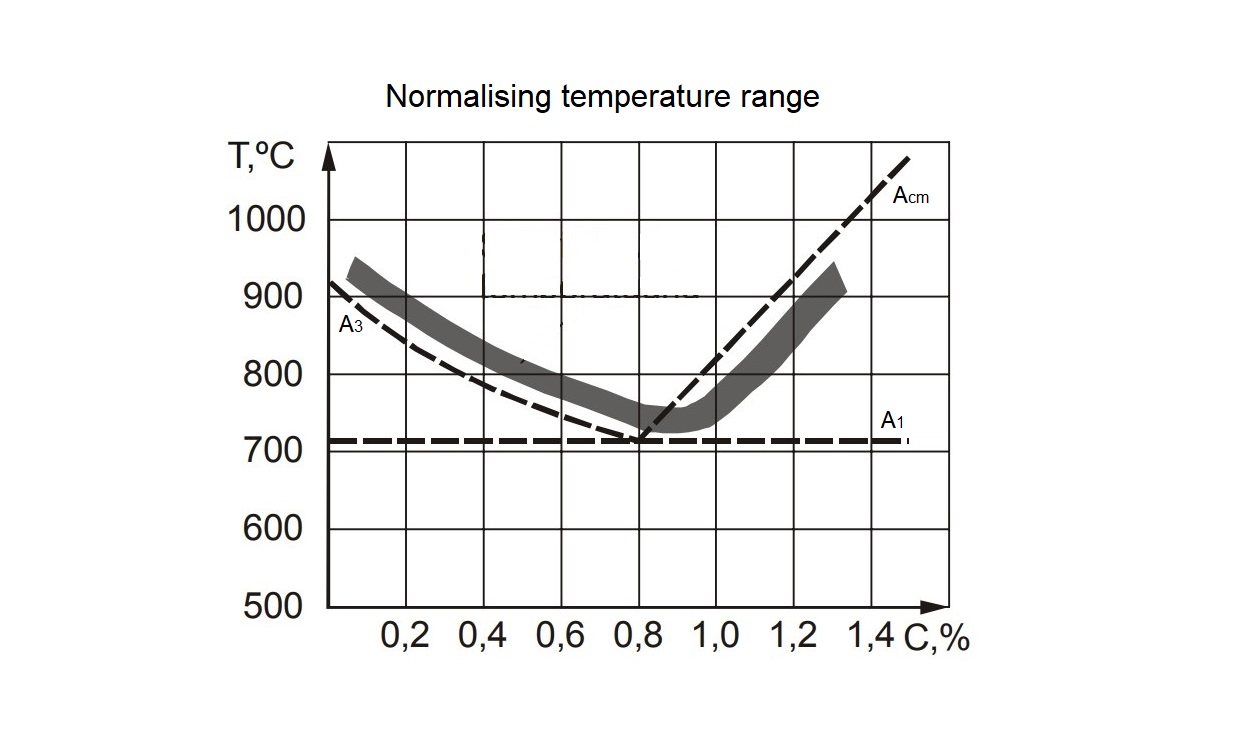The manufacturing industry uses heat treatment processes to improve a material’s mechanical properties. Depending on the desired properties, we can choose from processes such as annealing, normalising, tempering, etc.
In this article, we take a look at the normalising process. Let us start by understanding what it is.
What Is Normalising?
Normalising is a heat treatment process in which we heat the metal to a predetermined temperature, hold it there for a certain duration, and then cool it back to room temperature in air (or gas).
The process causes the recrystallisation of the material microstructure. The new microstructure provides a host of benefits such as increased ductility, increased toughness and reduced hardness.
In applications where these properties are needed, normalising is a relatively quick and affordable way to achieve them.
When Is Normalising Used?
Normalising comes from the word normalisation which means to return back to normal. Normalising is therefore usually done after metal fabrication processes have caused a material to change its properties.
For example, fabrication processes such as stamping, forging, hot rolling, welding and casting can lead a material to develop significant thermal and mechanical stresses. The metal may also become excessively hard.
Normalising allows the grain structure to realign into a much more streamlined manner that returns the metal closer to its original properties.
If the material must undergo further processing, normalising can improve its machinability. But normalising can also be the final process to restore certain properties to metal alloys before being put into use.
Normalising is also used when there are budget constraints. Because normalising involves the cooling of materials in air, the process requires less furnace time making it cheaper than the annealing and tempering processes. We can switch the furnace off once we have raised the temperature and soaked the material for the required duration.
Also, for engineering steels such as low-alloy and mild steels, the improvement in properties is identical for annealing and normalising. It is prudent to use normalising in such cases due to its lower costs.
The difference is larger when comparing the annealing and normalising effects on medium carbon steels (0.3 to 0.5%C). But even for these steels, we can replace quenching + tempering with annealing for cost advantages.
In most cases, normalising is enough if the components are not going to be under heavy loading.
Normalising Process

The normalising process has three stages:
1) Recovery stage
In the recovery stage, we increase the temperature of the material to a point where the existing non-uniform grain structure undergoes refinement. It is at this stage that stress relieving occurs due to heating.
The metal is further heated above the hardening temperature where it enters the next stage.
2) Recrystallisation stage
This stage begins when the metal’s temperature crosses the recrystallisation temperature. The temperature is around 30-50 degrees Celsius above the upper critical temperature (Ac3 or Acm).
This is higher than annealing and tempering temperatures. The range is between 780 – 950 degrees Celsius depending on the carbon content of the steel.
Changes in the metal’s crystal structure take place at this stage. Undesirable structures such as bainite and carbides dissipate from the material. New austenitic structures are formed. The austenitic grains are smaller in size than the previous ferritic grains.
The metal is held at this temperature for some time. This part of the process is also known as soaking.
3) Grain growth stage
This stage occurs when the material is cooled from the recrystallisation temperature to room temperature in the air. The new-formed grains mature fully during this stage. The final mechanical properties are affected by the way cooling occurs.
The faster the cooling, the harder the final product will be. The cooling rate in normalising is faster than annealing due to the material being air-cooled. This is why normalised steel has higher hardness than its annealed counterpart. The steel dimension analysis also affects the final hardness. For most steels, the final hardness after normalising lies between 100 HB and 250 HB.
- Personal account manager
- Quality assurance
- Payment terms for companies
- On-time delivery by Fractory
Benefits of Normalising
Normalising provides the following benefits:
-
Increased ductility
-
Reduced hardness in most cases. But we can also use normalising to increase the final hardness depending on the original hardness of the material.
-
Relieves internal stresses
-
More affordable than other processes
-
Requires less time
-
Better surface finish than annealed parts
-
Corrosion protection



